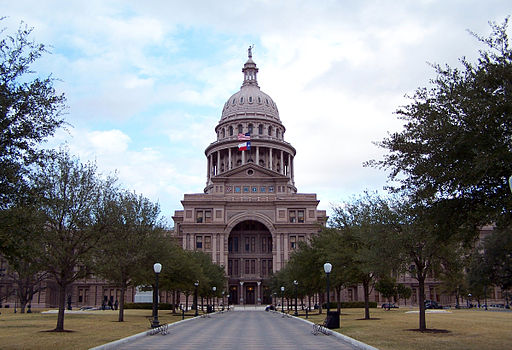Tag: Redistricting
-
Texas enacts new state legislative district maps

Texas enacted new state legislative districts on October 25, 2021, when Gov. Greg Abbott (R) signed proposals approved by the Texas House and Senate into law. These maps will take effect for Texas’ 2022 state legislative elections. The Senate Redistricting Committee released a draft of a Senate legislative map on September 18, 2021. A Senate…
-
Texas enacts new congressional districts

Texas enacted new congressional districts on October 25, 2021, when Gov. Greg Abbott (R) signed a proposal approved by the Texas House and Senate into law. This map will take effect for Texas’ 2022 congressional elections. Sen. Joan Huffman (R) proposed a congressional map on September 27, 2021, and the Senate approved an amended version…
-
Redistricting timeline updates: Colorado and Utah face deadlines, Pennsylvania holds public hearings

Here’s a summary of recent redistricting timeline updates from Colorado, Pennsylvania, and Utah. Colorado: After the Colorado Independent Legislative Redistricting Commission approved state legislative map proposals to be sent to the Colorado Supreme Court for review on Oct. 11 (House map) and 12 (Senate map), the deadline for the court to either approve or send…
-
West Virginia enacts new congressional districts

West Virginia enacted new congressional districts on Oct. 22, 2021, when Gov. Jim Justice (R) signed a proposal approved by the House of Delegates and Senate into law. This map will take effect for West Virginia’s 2022 congressional elections. On Sept. 30, 2021, the House and Senate Redistricting Committees released 18 congressional district map proposals.…
-
West Virginia enacts new state legislative district maps

West Virginia enacted new state legislative districts on Oct. 22, 2021, when Gov. Jim Justice (R) signed map proposals approved by both legislative chambers into law. The maps will take effect for West Virginia’s 2022 state legislative elections. On Sept. 30, 2021, the House Redistricting Committee released a single-member district map proposal for the West…
-
Redistricting map updates: proposals, advancements, and enactments between Oct. 13 and 20

At least nine states progressed in either proposing or advancing new congressional and state legislative district maps as part of the 2020 redistricting cycle between Oct. 13 and Oct. 20, 2021. Proposed Arizona: The Arizona Independent Redistricting Commission released a new series of state legislative and congressional maps between Oct. 15 and Oct. 19. The commission…
-
Roundup of noteworthy court challenges involving redistricting (Oct. 19)

Here’s a summary of recent court challenges involving redistricting. Former Republican elected officials file lawsuit challenging Oregon’s congressional map On Oct. 11, four former Oregon elected officials—former Oregon Secretary of State Bev Clarno (R), former Oregon House Republican leader Gary Wilhelms (R), former Mayor of The Dalles James Wilcox, and former Oregon House Speaker Larry…
-
Redistricting update: Virginia redistricting commission’s legislative map deadline passes, Arkansas congressional redistricting veto referendum campaign announced

Here’s a summary of recent redistricting updates from Virginia and Arkansas. In Virginia, the Redistricting Commission did not meet the Oct. 10 deadline to submit state legislative maps to the General Assembly. Under state law, the commission is given a 14 day extension to submit maps after “its initial failure to submit a plan to…
-
Redistricting timeline update: California and Connecticut set final deadlines

Here’s a summary of recent redistricting updates from California, Connecticut, New Jersey, Nevada, and Washington. California: On Sept. 22, 2021, the California Supreme Court set a Nov. 15, 2021, deadline for the release of initial draft district plans by the California Citizens Redistricting Commission. The court also set a Dec. 27, 2021, deadline for the…
-
Redistricting map updates: proposals, advancements, and enactments between Oct. 6 and 13

At least eight states made progress in either proposing or advancing new congressional and state legislative district maps as part of the 2020 redistricting cycle between Oct. 6 and 13, 2021. Proposed Massachusetts: The Special Joint Committee on Redistricting released proposed maps of state House and Senate districts on Oct. 12. The committee will accept…

